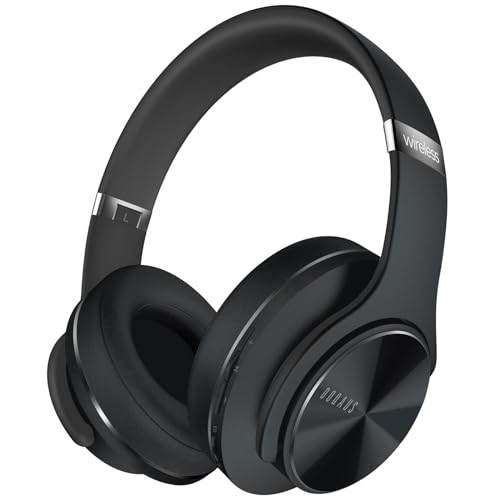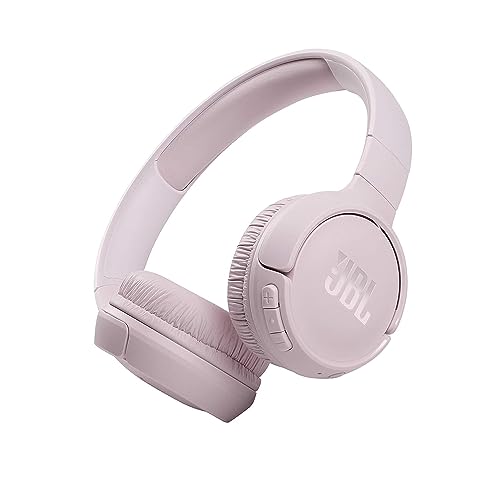What to Look For in Headphones wireless bt headphones
 Wireless headphones gives you a wide range of motion without being tethered to your audio source. This can be great for those who are tired while working at home or need to move around during calls.
Wireless headphones gives you a wide range of motion without being tethered to your audio source. This can be great for those who are tired while working at home or need to move around during calls.
Bits are the basic building elements of computer language and are represented as a series of 0s or 1s. These digital signals are transmitted to your headphones via Bluetooth which is a wireless radio transmission technology.
Noise-Canceling
Noise-canceling headsets can help you concentrate in a noisy work environment or rest on a plane or train and listen to music in peace. They are more expensive than standard Headphones Bluetooth and require active noise control, which makes use of electronic circuitry to digitally mix in an inverted version of the sounds around you in order to reduce your perception of them. This requires more power, and the headphones typically have a battery that has to be recharged or replaced regularly. The extra electronics can also increase the size and weight of the headphones.
Most manufacturers offer headphones with noise cancellation that are Bluetooth-enabled and wireless. This is a common choice, given the popularity of these features for audiophiles. Wireless ANC models are also available, but they aren’t as common. Bluetooth headsets typically have touch controls, support voice integration with Siri, Google Assistant and Alexa and feature high-resolution audio codecs that can provide your listening experience with an impressive boost.
ANC headphones are available in different styles, from sleek and lightweight to elegant and luxurious. You can also find sports-friendly earbuds that are sweatproof and designed to stay put during intense workouts.
A headphone’s sound quality depends on the microphones and drivers which have to be able to deliver clear and powerful bass while cancelling ambient noise. The top headphones for noise cancellation have great audio quality that allows you to hear your music like they’re playing in a large concert hall.
Most modern headphones come with various additional features, such as the ability to switch between ANC modes, or a transparency mode which allows you to hear the sounds of your surroundings for a short time. Some noise-canceling headphones let you to alter the volume of your music and provide a hands-free calling option for phone calls.
Some wireless headphones have built-in chargers and can last for a long time before needing to recharge. Monoprice’s BT600ANC over-ear headphones is a good example. It comes with a case that holds a few charge and can be charged quickly.
Comfort
When headphones are involved, comfort is paramount. If they are uncomfortable for long listening sessions, then it defeats the whole reason for using headphones. Look for headbands that are flexible ear cups and ear cups that are cushioned to allow you to comfortably wear them over your ears.
Some models have touch controls on the earcups, which makes it easy to alter the volume of music played back and phone calls. Some come with an accompanying app that lets you adjust EQ settings to suit your hearing. Some headphones feature active noise cancellation, and some even include a built-in microphone for hands-free calls. This is a must for frequent travelers.
Many wireless headphones have a detachable cable that can be used to secure them on your neck or head when you’re not using headphones. The cable can be used to connect headphones to an audio receiver or to another device, such as computers. However, be aware that the detachable cables can result in more wear and tear on the headphones than an on-ear or over-ear model that has no cord. Try on wireless headphones before buying them to make sure they are comfortable.
The earbuds with wires are more likely to fall out of your ear during exercise and have a shorter battery life. The cables of wired earbuds can be smudged against skin and clothing making annoying noises (also known as microphonics). Wireless earbuds from V-Moda S-80 avoid these problems by providing earbuds that are comfortable and remain in place even during sweaty exercise. The audio quality is excellent, too.
The majority of wireless headphones can be charged while on the move, saving you both time and money. Some models come with quick charge technology that can top up the headset to a full capacity in only two hours, meaning you can listen to entertainment and movies while on the go.
The Sony WH1000XM5 is one of the most immersive and comfortable headphones available. This is thanks to their lightweight and compact design. The Sony WH1000XM5 is one of the best headphones to take when you travel, thanks to its ANC mode which blocks out background noise.
 Design
Design
The design of a headset should be viewed with consideration by the person listening. They must be comfortable to wear and fit comfortably over the ears and feel secure. It is also essential that the quality of the sound is excellent. They should offer a balanced sound, with a strong presence in the low frequencies without increasing them to the point of distortion. The noise cancellation feature of the headphone is likely to work. If the headphones come with an active noise cancellation feature, it will reduce the rumble of busses and office chatter so you can focus on your music or phone calls.
Some headphones use a wire connected to the audio source however, the majority are wireless and can connect to a dongle or transmitter that is included or in conjunction with other devices. These wireless transmitters are made to embed an audio signal in the single frequency carrier wave and transmit it to the radio frequency or infrared range. Wireless receivers receive the single-frequency carrier wave and decode it back into an analog audio signal that powers the headphones’ speakers.
Wireless headphones typically have buttons to control the audio playback or call functions, and they typically have a built-in microphone to enable hands-free calls with tablets or smartphones. Some wireless headsets come with a charging case they can slide into when not in use.
One of the main advantages of headphones that are wireless is the ability to move away from the source of your music up to 15 meters (49 feet), without losing the connection. You can listen to music while working out, in the office or commuting.
Bluetooth is the most common wireless headphone technology. Although it has seen improvements over the years and is now more reliable than wired connections, it still isn’t as good as wired connections in terms of quality. Other wireless headphone connections, such as RF or USB, can provide better audio quality and higher bit rates. However, these connections require a cable connecting the headphones to their audio source, and they are not as convenient as Bluetooth headphones that can connect to an mobile device.
Connectivity
Wireless headphones let you listen to music or watch TV without tangling up your cords. They use a small radio receiver and transmitter to connect to your audio device, giving you hands-free control of your media. Certain models also have built-in noise cancelling or active noise reduction technology that blocks out background noise. Portable and often used by those who engage in many different things They are designed to be able to travel. They can be used for running, working out at the gym, headphones bluetooth or watching TV while in bed without being disruptive to anyone and many more.
Bluetooth headphones work by sending an audio signal to a radio receiver within your headphones. This radio receiver converts digital bits into analog signals that can be interpreted and interpreted by the speakers of your headphones. This analog signal is then used to produce sound. Wireless headphones are a form of active component that requires a source of power to allow their internal hardware to function. Wired headphones, on the other side, are passive components that let the speaker drive up to the audio source.
When you use a wireless headphone, the transmission of the audio signal takes place by using radio waves or infrared signals. These electromagnetic waves are vibrations that transmit energy from one location to another. These vibrations can cause magnetic and electrical fields to oscillate, which transmits information. Radio waves are a form of electromagnetic waves that can travel through almost any medium including water and air.
Wireless transmitters are an essential component of every model of headphones. The transmitter is responsible for encapsulating the audio signal into a wireless format that can be transferred to the compatible headphone receiver. Wireless headphone transmitters are standalone devices that connect directly to an audio source or can be integrated into audio devices that are advertised as wireless.
The quality of the sound you hear when using wireless headphones is contingent upon how well the transmitter and receiver are tuned. Some manufacturers include an audio codec to guarantee high-quality audio in their headphones. Sony’s LDAC allows headphones to transmit audio three times the speed of conventional Bluetooth. This will result in more precise and clear sound.
